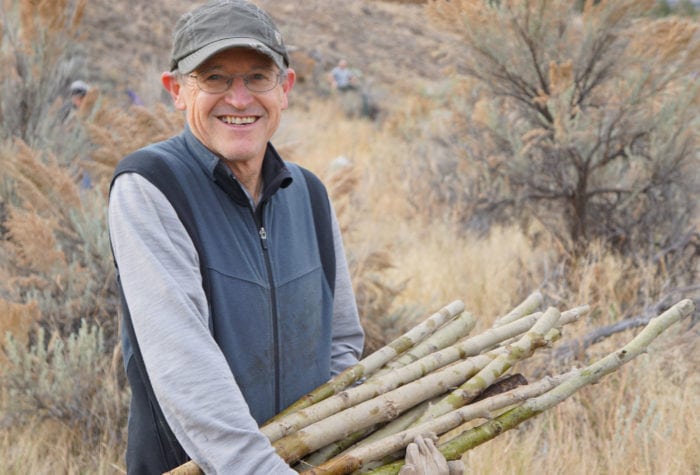ONDA and our partners have worked tirelessly since 2008 to communicate that Steens Mountain is an inappropriate place for industrial-scale energy development.
Steens Wind
Sage Brown Website
Steens Wind (ONDA v. Zinke)
ONDA and Audubon Society of Portland filed a lawsuit challenging the Department of the Interior’s approval of Columbia Energy Partners’ plan to build an industrial-scale wind facility on Steens Mountain in southeastern Oregon’s high desert. In May 2016, the Ninth Circuit Court of Appeals agreed with ONDA that Interior had failed to adequately consider the project’s effects on the Greater sage-grouse. In April 2017, the District Court vacated the project decision.
The decision would have allowed the developer to build up to 69 wind turbines and a high-capacity transmission line on this iconic mountain recognized as part of our National Landscape Conservation System. The lawsuit blocked what was an unlawful project that would have forever changed this otherwise wild and beautiful landscape.
In 2013, 2014, and again in 2015, ONDA petitioned the Secretary of the Interior to revoke the 2011 project approval decision. ONDA explained that, among other things, the developer had lost its interconnection agreement that was necessary to deliver any electricity to the grid, Southern California Edison had cancelled its agreement to purchase the any electricity generated by the project, the Bureau of Land Management (BLM) had revoked its Notice to Proceed and refunded the project bond to the developer, the required county permit had become void, and that new science had continued to emerge demonstrating that the effects of industrial-scale wind projects on Greater sage-grouse are far more serious than the agency had conceded in its 2010 environmental review.
By 2016, this crumbling financial and regulatory framework, coupled with powerful new spatial analyses illustrating the severe impacts the project would have on sage-grouse, made it clearer than ever that this simply is not the place for an industrial-scale energy project. Despite these fatal problems, BLM rejected ONDA’s petition in June 2014, leaving conservationists to continue to fight the illegal project in court. (The Secretary never responded to the petitions.) In March 2016, ONDA argued the case before a three-judge appellate panel in the United States Ninth Circuit Court of Appeals.
Transmission lines for the project would have cut across an area on Steens Mountain protected by Congress in 2000 and the project would fragment one of the largest undeveloped landscapes left in the Great Basin. Wind turbines, transmission lines, access roads, and associated development pose threats to migratory routes and breeding areas for sensitive species such as bighorn sheep, Golden eagles, and Greater sage-grouse. The sage-grouse is an iconic desert bird that serves as an indicator of ecological health in the region; populations have declined significantly over the past several decades due primarily to loss and fragmentation of its sagebrush habitat. The Department of the Interior has recognized the “small but important” sage-grouse population that lives on Steens Mountain as being “regionally significant” for the survival of the species.
In the 2016 court decision, the Ninth Circuit agreed that BLM’s failure to survey the project area for crucial winter habitat was fatal to the agency’s environmental review because it “materially impeded” informed agency decision making and meaningful public review. And in 2017, the district court concluded that BLM’s error was serious as a matter of law because the public was never provided with or allowed to comment on accurate information about whether the project site might provide winter habitat for sage-grouse.
